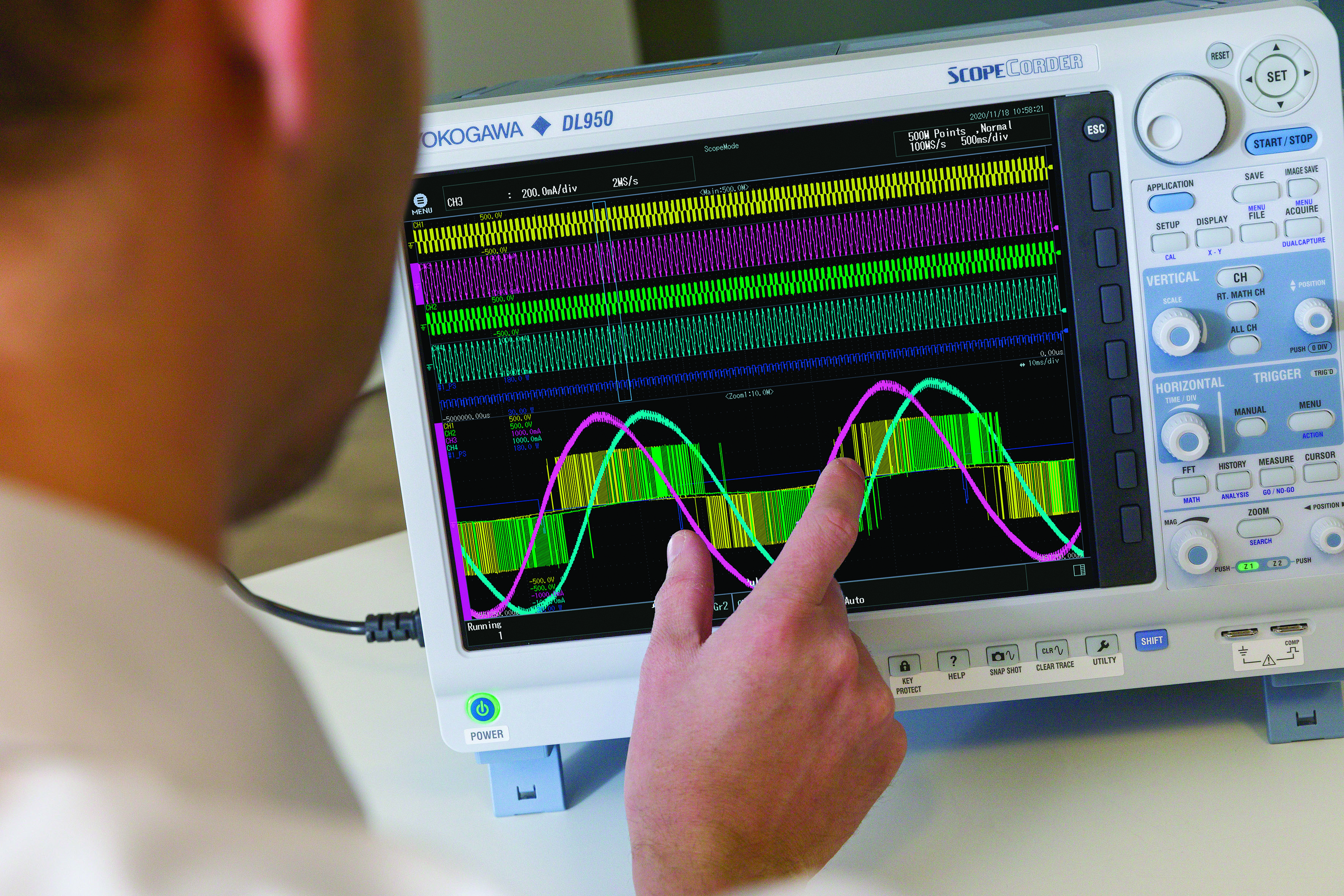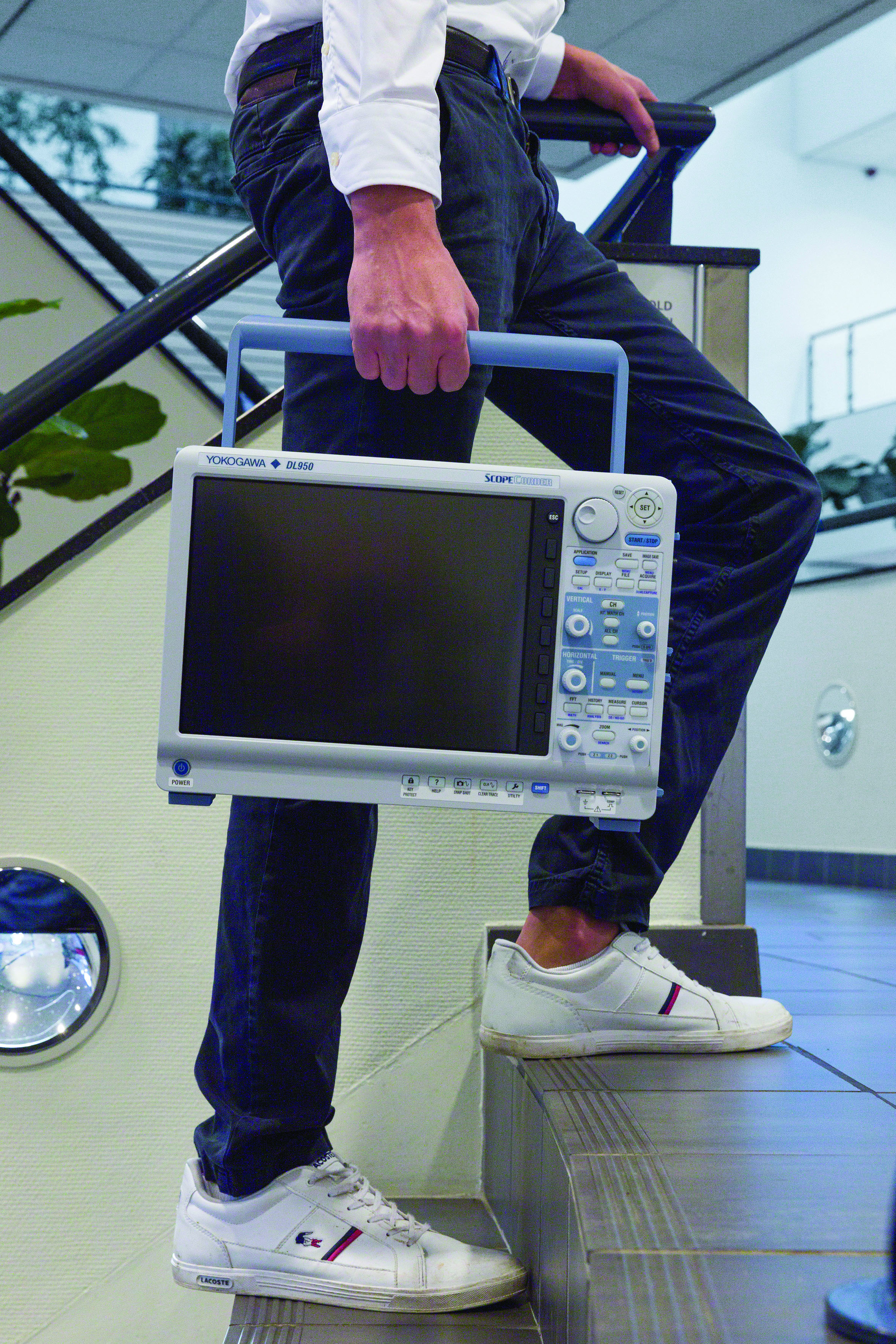DL950 ScopeCorder puts developers on the path to greener power
Sustainable energy means that industry is developing renewable, energy-efficient power technologies which need to be tested, measured and maintained to optimise performance and operating costs. Combining an oscilloscope and recorder in a single unit can provide a versatile, reliable solution for measurement and analysis
As the world grows more aware of the need for sustainable use of electricity and the avoidance of waste and pollution, companies across the globe are looking into cutting energy losses, developing new renewable energy sources and energy efficient power technologies, while ensuring they conform to new more stringent regulations.
To meet these ambitions, engineers need to increase efficiency to minimise energy losses in their designs, while also seeking to optimise performance.
Measurement and analysis
A detailed understanding of their application’s electrical behaviour is needed, which in turn demands a measurement and analysis solution that provides trustworthy and precise measurements. As well as the electrical parameters, the rotational and vibrational behaviour of a generator or turbine assembly may be of interest.
Measurement tools such as a multimeter give electrical readings but not over time, while an oscilloscope can observe waveform details, but offers limited numbers of channels. By contrast, a data acquisition recorder typically has hundreds of channels but they do not sample the signals very quickly, so waveforms cannot be observed.
These issues are solved by the Yokogawa DL950 ScopeCorder, which combines the
benefits of an oscilloscope and a recorder in a single instrument. It offers a large number of channels and the ability to take measurements over long periods of time. Developers can combine electrical measurements with mechanical measurements. Waveforms can be observed in detail and the trigger capability can be used to identify and isolate the event of interest.
As well as electrical measurements, the DL950 can be used to take mechanical
measurements, for example, from a rotational sensor, allowing measurement of the
position of the shaft of a wind turbine, or strain gauges to assess the deflection of rotor blades.

Figure 1: The versatile DL950 can be used for electrical and mechanical measurements
Renewable energy
For a wind turbine, the DL950 will find application in a typical nacelle ground test regime, for example conducting commissioning tests to check the nacelle and its control system, testing the strength of the components and carrying out endurance tests to analyse their fatigue life. A torque sensor or temperature sensors can be added to understand the temperature distribution from increasing power.
Analysis of power, harmonics and encoder rotary angles can all be added as options.
Engineers working with previous models in the ScopeCorder family said they wanted more channels, a faster sample speed and increased flexibility and efficiency of use.
The DL950 can run up to 32 isolated analogue channels with data acquisition rates of up to 10 MS/s at 16-bit or up to 128 digital channels. If more are needed, up to five DL950 units can be synchronised to offer up to 160 analogue input channels. This feature synchronises measurement start/stop, trigger and sample clock for applications such as battery cell evaluation, multi-point vibration analysis and multi-point strain tests.
Alternatively, up to 640 temperature channels can be used, employing 16 channels with eight slots for each of five DL950 units. The sub units can be synchronised to start and stop their measurements via signals from the main unit.

The DL950 combines the features of an oscilloscope and recorder in one portable instrument
Versatile testing
The DL950 provides ultimate versatility, as it can be connected to 21 types of input modules, including universal voltage/temperature, acceleration/voltage and strain modules.
Designed for ease of use, touching an application icon brings up the graphical setup screen, while a guide-through wizard makes application set up easy. Users can also register favourite applications.
The DL950 is equipped with a large and fast acquisition memory of up to 8GPoint capacity, allowing developers to either measure for longer times, at higher sample rates or with more channels simultaneously.
Depending on the sample rate, the DL950 can record for five hours on one channel at up to 2MS/s, or record at 200kS/s for 20 hours with 16 channels. With its large 512GB internal SSD, the DL950 can record for up to 50 days at lower sample rates.
Test for maintenance
Recording measurements over these longer periods is often useful for endurance testing of wind turbines.
Long recording intervals can also be used for maintenance applications. For instance, in wind power or renewable energy applications, companies will use the instrument to develop the electric drive, but also, once the product is in service, there might be an issue or problem with operations.
Whether the measurement signals are derived from a small solar cell or a large turbine found in a power generating facility, the DL950 offers the features and flexibility to assess all applications.
About the author:
Kelvin Hagebeuk, is European Marketing Manager, Test and Measurement Yokogawa Europe.
For further information about the DL950 please visit:
https://tmi.yokogawa.com/eu/solutions/products/oscilloscopes/scopecorders/dl950/









